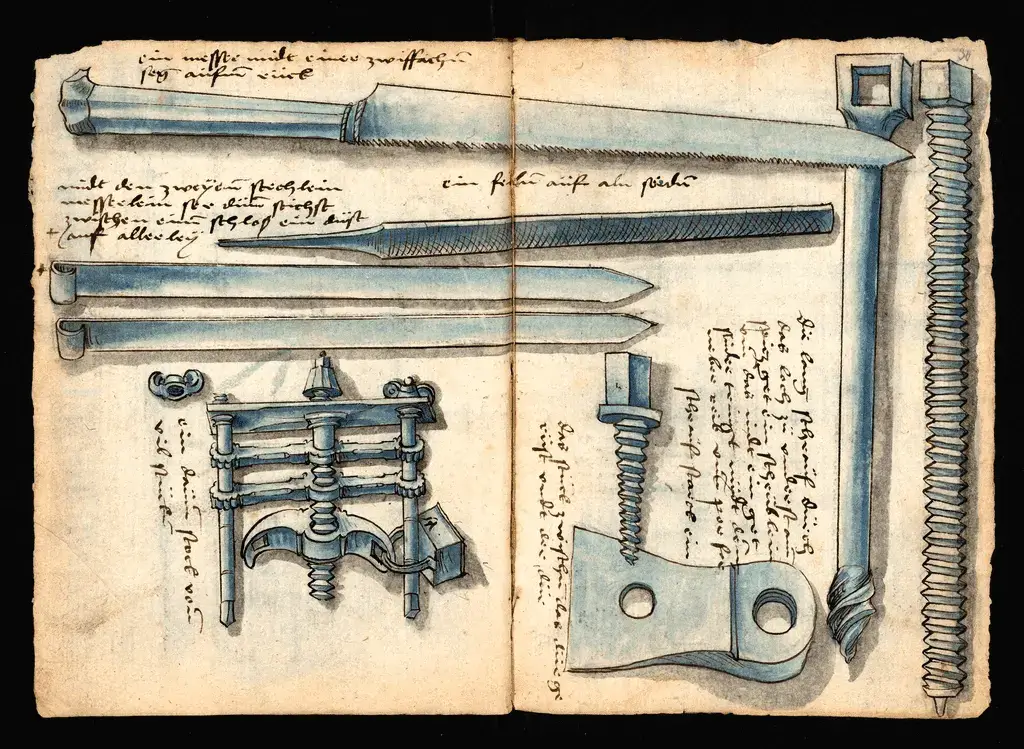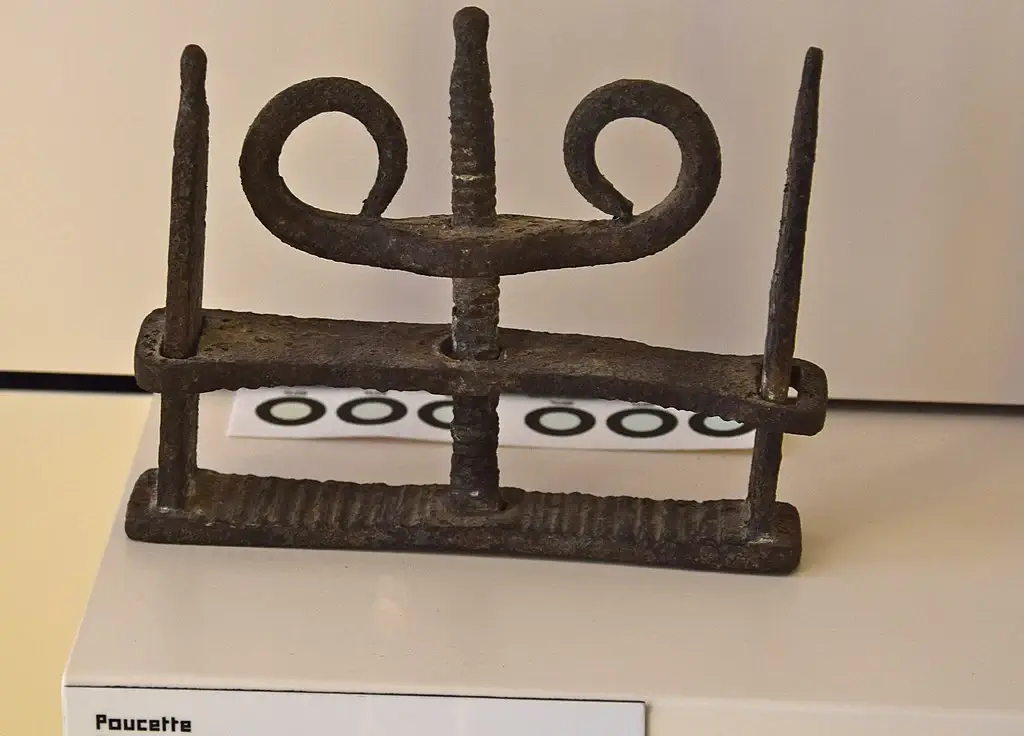The thumbscrew was an instrument of torture that was first used in early modern Europe. While the most common thumbscrew model targeted a single thumb or big toe, adaptations allowed for both big toes, all five fingers of a hand or even all ten toes to be subjected to its mechanism. Renowned for its efficacy, the thumbscrew was a potent tool for extracting confessions.
How Did The Thumbscrew Torture Device Work?
A thumbscrew typically consisted of three vertically aligned bars, with a movable wooden bar affixed to the top of these bars, creating a specific spacing. A separate, unattached second bar, equipped with three holes, could be inserted into these aligned bars.

It was deemed successful in extracting confessions and other information from the victims. The compact design of the thumbscrew concealed its potential to cause severe damage, making it a powerful instrument of coercion during interrogations and torture sessions.
In the process of torture, the victim’s fingers were positioned between the stationary bar and the movable one. The movable bar was then gradually tightened along the vertical bars, securely pressing against the victim’s fingers. As this tightening progressed, the victim’s fingers became increasingly compressed. Despite its simplicity, this device was remarkably effective in crushing the bones of the fingers.
To intensify the torment, torturers often applied this method to each finger individually, enhancing the victim’s agony with every finger crushed. Due to the device’s capability to cause immense suffering without causing death or unconsciousness
Thumbscrew Torture Device in History
The thumbscrew was initially introduced during the Spanish Inquisition. It found its most frequent application in tormenting alleged heretics or those accused of blasphemy. The inquisitors employed this device to coerce confessions from these individuals before their formal trial and subsequent judgment. By utilizing the thumbscrew, they aimed to extract admissions through force.

The efficacy of the thumbscrew was evident in numerous instances, leading to the confession of various crimes by many innocents who were, in fact, blameless. As there were no regulations in place governing the utilization of torture implements for eliciting confessions, the thumbscrew became a widespread tool. Curiously, its use did not carry any legal repercussions or pose a threat to the Inquisition’s stance, as there were no laws constraining its employment during this time.
The introduction of the thumbscrew into Britain occurred after the Spanish Armada’s invasion in the 16th century. In the early 17th century, the Italian Baroque painter Artemisia Gentileschi was tortured with thumbscrews as part of a trial to determine whether her virginity had been taken.
Even into the mid-18th century, the autobiography of Olaudah Equiano, a former slave, titled “The Interesting Narrative of the Life of Olaudah Equiano,” recounted instances of thumbscrews being employed to torment slaves.
In this same era, during the mid-18th century, Thomas Clarkson carried thumbscrews with him to advance his cause for abolishing the slave trade and subsequently emancipating slaves within the British Empire. He intended to evoke compassion by showcasing this device, along with other instruments of torture utilized on slaves, thereby fostering a deeper understanding of their suffering.
What was the Thumbscrew used For?
The origin of the thumbscrew is attributed by historians to the Russian army, where officers employed it to discipline errant soldiers. This device found utility not only in military contexts but also within the framework of the Inquisition for both punishment and extracting confessions.
The mechanism inflicted excruciating pain, commencing gradually but intensifying as the screw was manipulated. The pace of turning the screw could be either swift or deliberate. An interrogator might opt to tightly grip a person’s thumbs, allowing a few minutes to pass before gradually increasing the pressure.
The pain could prompt the individual to admit to various things. This underscores the instrument’s effectiveness in leveraging anguish to coerce confessions or compliance. It was sometimes also used in prisons, where crushing the two big toes using the thumbscrew made it harder for prisoners to escape.
Thumbscrew in Pop Culture
The thumbscrew is explicitly referred to as a torture instrument by Professor Moody in “The Goblet of Fire,” a book from J.K. Rowling’s Harry Potter series, published in 1997. It is listed alongside knives and the Cruciatus Curse as tools of torture. Depictions of the thumbscrew in action can be found in various movies and TV shows. For instance, it is showcased in the 2005 movie “The Headsman,” which delves into Europe’s Inquisition during the 16th century.
The thumbscrew also makes an appearance in Scott Cawthon’s 2019 augmented reality game, “Five Nights at Freddy’s: Special Delivery,” and is mentioned in the third season of the satirical American drama series “Succession.” These instances across diverse media platforms emphasize the historical and cultural significance of the thumbscrew as an instrument of pain and coercion etched in popular memory.
Summary
The thumbscrew is a torture device that originated in early modern Europe. While the standard design targeted a single thumb or big toe, variations allowed for broader application. Its effectiveness in extracting confessions and causing intense suffering is noteworthy.
Operating through three vertically aligned bars, a movable wooden bar atop these bars created specific spacing. An unattached second bar with holes could be inserted into these aligned bars. The victim’s fingers were positioned between the stationary and movable bars, the latter tightened along the vertical bars, compressing the victim’s fingers and bones.
Historically, it emerged during the Spanish Inquisition, torturing heretics and blasphemy suspects for confessions. This method, crushing fingers individually, intensified pain and compelled admissions.
